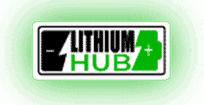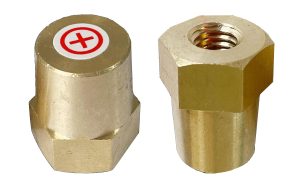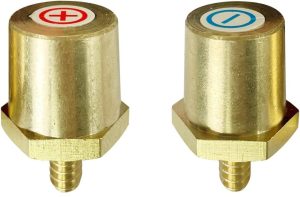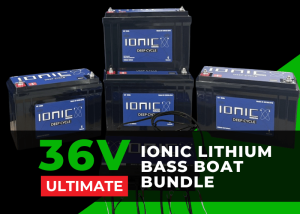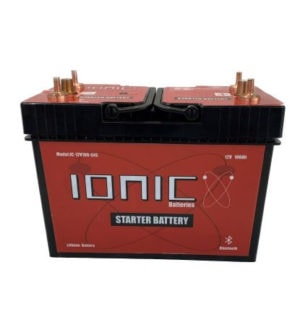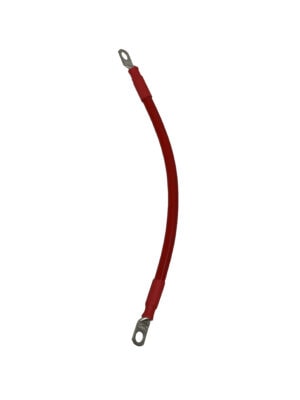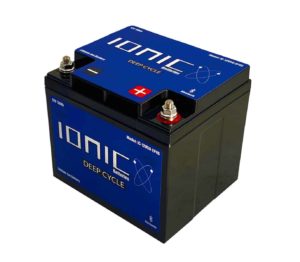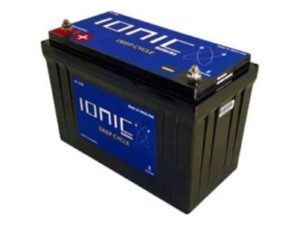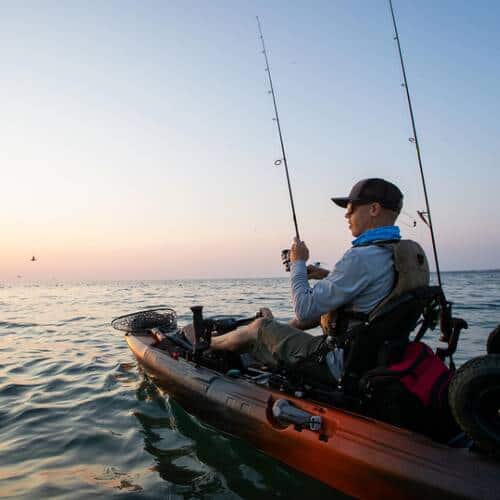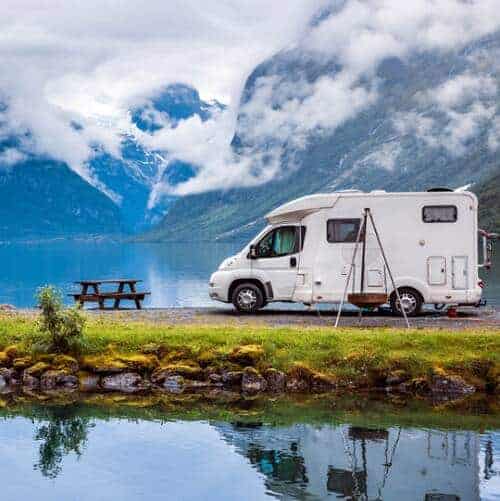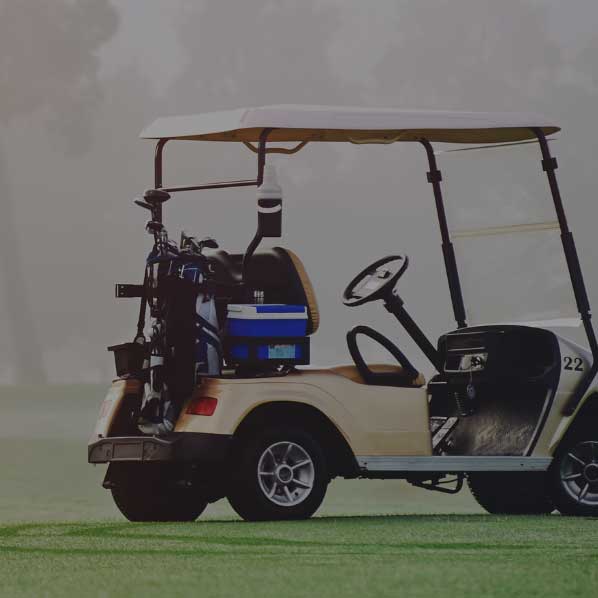Lithium-ion battery Environment
Batteries should be stored and installed in a clean, cool and dry place, keeping water, oil, and dirt away from the batteries. If any of these materials are allowed to accumulate on the batteries, tracking and current leakage can occur, resulting in self-discharge and possible short-circuits. Battery chargers should also be installed in well-ventilated, clean areas that are easily accessible. The recommended operating temperature range is between -4°F to 122°F (-20°C to +50°C) with a humidity of <90%. Elevated battery electrolyte temperatures of >80°F (27°C) will reduce operating life, while lower battery electrolyte temperatures of <80°F (27°C) will reduce battery performance. It is important to minimize temperature variations between the cells, therefore, do not arrange the batteries where they are too tightly ow. The batteries should have a minimum of 0.50” (12.7 mm) of space between . There are no liquids in the Deep Cycle Batteries. Because the chemistry is a solid, the battery can be mounted in any direction and there are no worries about lead plates cracking from vibration.
Lithium-ion charging levels
Proper charging is imperative to maximize battery performance. Both under-reduce the life of the battery. Most chargers are automatic and pre-programmed, while others are manual and allow the user to set the voltage and current values. Never charge a frozen battery. Ionic Deep Cycle Batteries may be used below freezing but charging below freezing causes plating/crystallization which weakens the battery making it more likely to fail due to vibration or hard use. Avoid charging at temperatures above 122°F (50°C).
Charging profile
For Ionic 12V Deep Cycle batteries, you should set your charger profile to charge up to 14.6 volts for 30 minutes and then float charge at 13.8 volts. For 24V Deep Cycle batteries, you should set your charger profile to charge up to 29.2 volts for 30 minutes and then float charge at 27.6 volts. For 48V Deep Cycle batteries, you should set your charger profile to charge up to 58.4 volts for 30 minutes and then float charge at 55.2 volts. Note that all 12V batteries above 12Ah, configured in Series, must be charged individually at 12V. Our 12V 12Ah battery has speci ic circuitry that will allow the batteries to be charged in series as conf charged with a 24V charger).
Slow or Fast charging
The charger voltage should always match the battery voltage or less. The newest Ionic chargers are designed to be left connected and powered on continuously. Chargers that do not have a “trickle charge” feature should be discontinued after the charging process is completed. To slow charge a battery use a charger with a amperage that about 10 percent of the batteries total amp-hours. To do a fast charge use a charger output that is about 40-45 percent of the batteries amp-hours of the batteries amp-hours. Slow charging results in lower battery temperatures and enhances the longevity of the battery and is therefore recommended by Ionic when possible. As an example, using a 100Ah battery, you would slow charge it by using a 10A charger and the battery would take about 10 hours to charge. You would fast charge it by using a 45A charger and it would charge in a little over 2 hours to charge. (See TABLE 5, PAGE 16 for our charger recommendations for each Ionic model)
Low temperatures
Many battery users are unaware that lithium-ion batteries cannot be charged below 0°C (32°F). Although the pack appears to be charging normally, plating of metallic lithium can occur on the anode during a sub-freezing charge. This is permanent and cannot be removed with cycling. Batteries with lithium plating are more vulnerable to failure if exposed to vibration or other stressful conditions. Lithium-ion batteries do warm up quickly with use as compared to lead-acid, so you may be able to get them above freezing with some use, allowing for a charge. It all depends on how cold of an environment you have and caution is advised.
Lithium-ion batteries capacity decreases when operating below freezing temperatures( 32F/ 0C). The current is still available, but the stored capacity will decrease. The colder the temperature the less capacity available. Both lead-acid and lithium-ion cells have increased internal resistance as the temperatures fall. Lithium batteries have more internal resistance in extreme cold temperatures of 0°F (-18°C) or lower, however, the batteries can be warmed up much quickly simply by putting a load on the battery, such as turning on your headlights for 15 to 30 seconds. Since Ionic batteries have substantially lower mass than lead-acid batteries, they warm up much quicker.
Recommended Battery and Charger configurations (Wiring Diagrams)
This figure shows the most basic connection between a battery charger and a single battery. The green “APPLICATION” box refers to the final application the battery is powering like your recreational vehicle or golf cart. The dashed charger cables are often a temporary connection but could be permanent if desired.
The positive charger output {red) connects to the positive(+) battery post. The negative output (black) connects to the negative(-) battery post. Always remember:
- positive connects to positive and negative connects to negative.
- the charger and the battery must have the same voltage.
The following pages additional configurations recommended by Ionic for battery bank wiring and charging. If you have any questions do not hesitate to call us at 704-360-9311.
Be sure to turn of all electrical components before wiring.
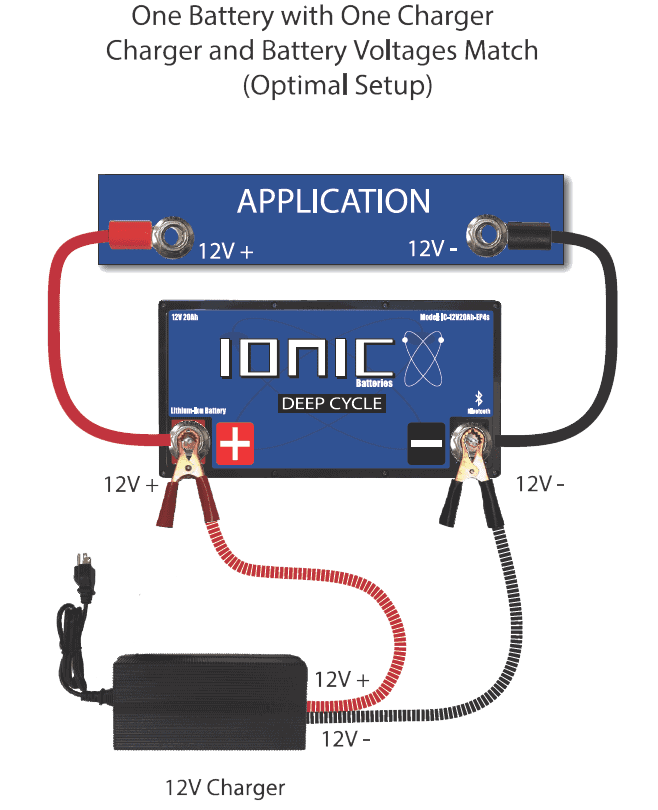
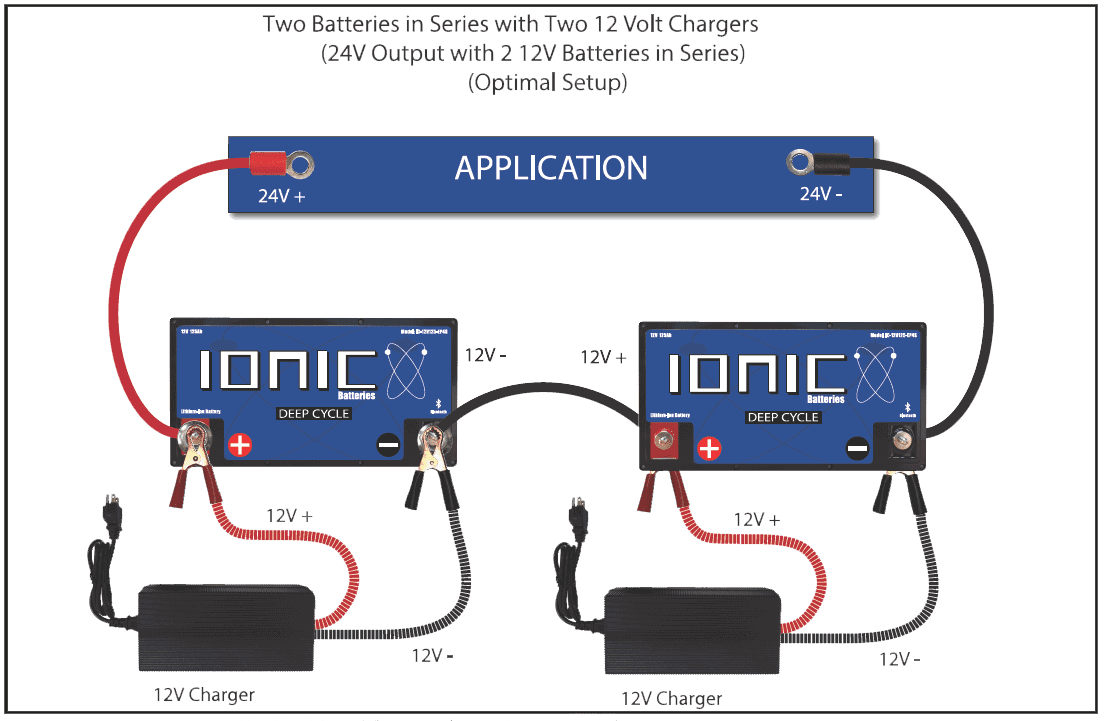
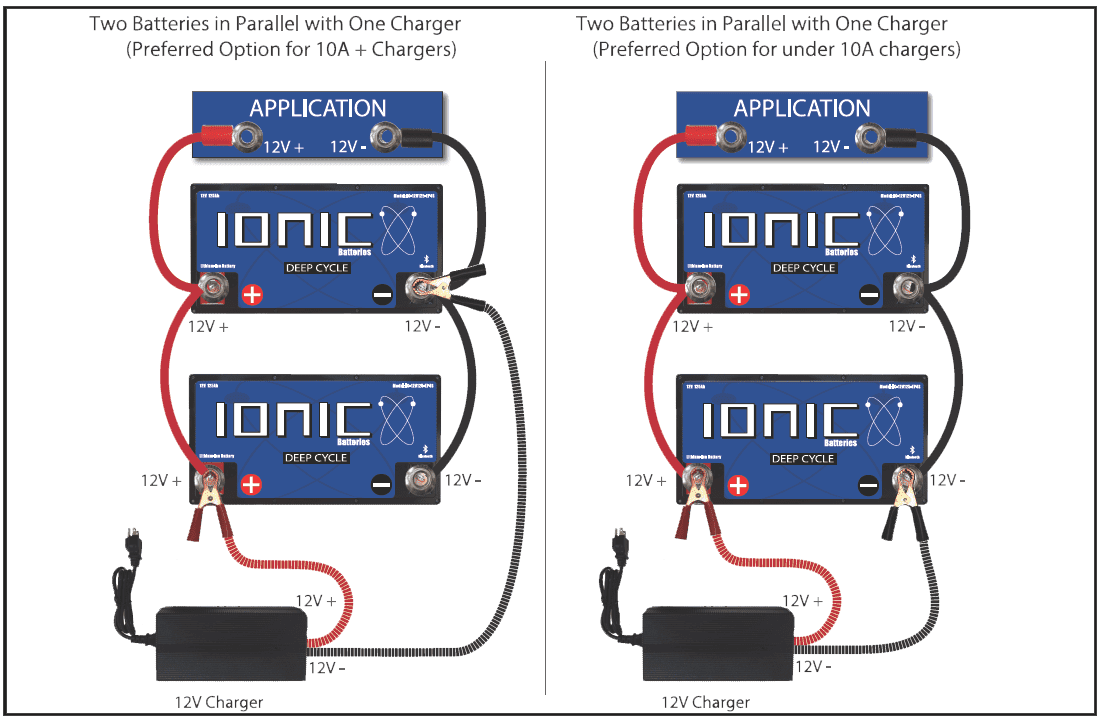
Chargers and settings
These are the chargers and settings that we recommend to customers.
If your charger puts out 14.2 to 14.6 volts to the battery when charging on the AGM setting it will charge with Ionic lithium batteries.
Do not use chargers with “desulfation” mode or equalizer mode that charges above 15V.
Below are some specific brands and models that are confirmed to work with Ionic lithium batteries. Other models will not charge the batteries completely.
- Ionic
- NOCO GenPro
- Dual Pro PS/Auto
- Minnkota Precision
- Pro Mariner/Pro Tournament Elite
- Stealth
- Troll Bridge DC
- Power Pole
- Minnkota Lithium Charger
*Minnkota Precision does not work on 24V or 36V batteries
Ionic Chargers
Note: For safety reasons, the charger times out and stops charging after 72 hours of continuous use. This is indicated by blinking red LEDs. To activate the charger again, simply disconnect and reconnect the power cable.
Recent Reviews
shop lithiumhub products
our best selling ionic brand lithium batteries
Our Ionic lithium marine batteries are created with the highest quality materials. Built for the long haul, these batteries will provide you with countless hours of enjoyment on the water.
-
Ionic Lithium 12V 50Ah | LiFePO4 Deep Cycle Battery + Bluetooth
Original price was: $599.00.$349.00Current price is: $349.00. Add to cart -
Ionic Lithium 12V 100Ah | LiFePO4 Deep Cycle Battery + Bluetooth
Original price was: $1,099.00.$699.00Current price is: $699.00. Add to cart -
Ionic Lithium 12V 125Ah | Dual Purpose Starter Battery 1100 CA + LiFePO4 Deep Cycle
Original price was: $1,199.00.$789.00Current price is: $789.00. Add to cart

need help finding the right deep cycle battery?
Our experts are just a click (or a call) away. Get fast, expert battery advice from a real human, located right here in the USA.
revolutionize every adventure
Ready to revamp your boat, RV, kayak, or solar setup? Select your pastime to get started.
Maximize Your Machine’s Potential
Ionic Lithium LiFePO4 batteries aren’t just for play. Put them to work in your commercial applications, scooter, UTV, or lawnmower setups. Shop batteries by application below.
GET IN THE LOOP
We’re always adding incredible lithium products to our lineup. Want to be the first to know when they drop? Sign up for LithiumHub updates, and get the inside scoop on exclusive deals and exciting new additions.
